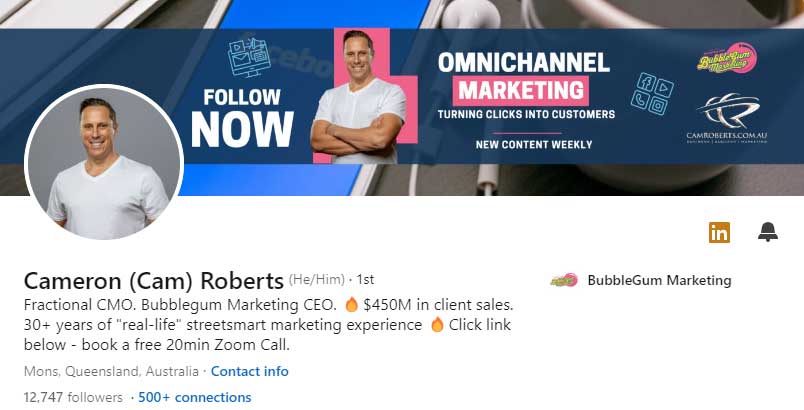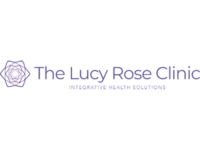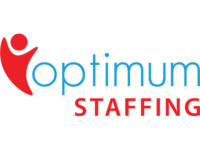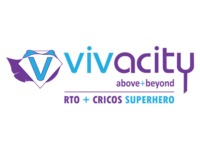How to Create An Effective Marketing Automation Strategy?
By Cameron Roberts – Founder & CEO of Bubblegum Marketing,
Posted On February 19, 2024
Imagine yourself in a situation where you have to handle multiple tasks at the same time. You have to create interesting content, nurture leads, analyse a lot of data, and also make sure to take enough rest. Do you find yourself relating to this situation? Well, this is where marketing automation comes into the picture. It’s like having a friendly robot that can help you transform your marketing game and increase your Return on Investment (ROI).
Don’t let the term “automation” make you think of impersonal or robotic messages. This blog aims to guide you on how to use technology to personalise engagement, streamline workflows, and measure success like never before. We will help you understand the what, how, and why of marketing automation, providing you with the necessary knowledge and tools to develop a successful strategy that aligns with your business goals.
Are you ready to take your ROI on a thrilling ride? Then fasten your seatbelts because we are about to start an exciting journey. Let’s begin!
What is Marketing Automation? [with Examples]
Imagine a world where your website remembers every visitor, sends them personalised emails based on their interests, and nurtures them seamlessly until they become loyal customers. Sounds like magic, right? Well, it’s actually the magic of marketing automation.
Essentially, marketing automation is the use of software to automate repetitive marketing tasks and engage your audience with relevant content at the right time. It’s like having a team of tireless robots working tirelessly in the background, while you focus on the bigger picture, like strategic planning and creative ideation.
But what exactly can marketing automation do? Here are some powerful examples:
- Automated email campaigns: Segment your audience based on interests and send personalised emails with targeted offers and content. Imagine a welcome email for a new website visitor, followed by a series of emails that educate them about your products and address their specific pain points.
- Lead nurturing workflows: Capture leads through forms, landing pages, or website interactions, and then nurture them with automated email sequences, drip campaigns, and relevant content downloads. This keeps your brand top-of-mind and guides lead smoothly through the buying journey.
- Social media scheduling and engagement: Schedule and publish social media posts in advance, and use automation to respond to comments and messages. This ensures consistent brand presence and timely customer service.
- Personalised website experiences: Use website tracking and behaviour analysis to personalise website content and offers for each visitor. This creates a more relevant and engaging experience, boosting conversions.
- Retargeting ads: Follow website visitors with targeted ads on other platforms like Facebook and Google, reminding them of your brand and enticing them to return.
These are just a few examples of what marketing automation can do, and the possibilities are truly endless. Marketing automation can be used to automate almost any repetitive marketing task, freeing up your time and resources for more strategic initiatives.
How to Build a Marketing Automation Strategy?
Efficiency and personalisation are crucial in today’s dynamic marketing landscape. That’s where marketing automation comes into play, offering a transformative approach to optimising workflows, nurturing leads, and ultimately, boosting your ROI. However, implementing automation alone won’t suffice. To realise its full potential, you need a strategic roadmap. Consider this section your blueprint for crafting a professional, results-oriented marketing automation strategy.
1. Defining Measurable Goals
Before you jump into marketing automation, it is important to have a clear idea of what success looks like for your business. What are your specific and measurable goals? Do you aim to improve lead nurturing by 20%, increase qualified leads by 30%, or enhance website engagement by 15%? Aligning your marketing automation goals with your overall business objectives ensures that you have a cohesive strategy and a data-driven approach.
2. Creating Buyer Personas
Understanding your target audience is essential for success in marketing automation. You can do this by creating detailed buyer personas that explore their demographics, pain points, needs, and online behaviour. By segmenting your audience based on these insights, you can communicate with them more effectively and provide personalised experiences. For example, you can create content that speaks directly to their unique challenges, which can help you build stronger relationships with them and increase conversions.
3. Mapping the Customer Journey
Visualise the path your ideal customer takes from initial awareness to loyalty advocacy. Identify key touchpoints where marketing automation can add strategic value, such as lead nurturing, delivering relevant content, and driving conversions at crucial moments. By mapping this journey, you gain a comprehensive understanding of where and how automation can best serve your audience.
4. Selecting the Right Marketing Automation Tools
With a plethora of marketing automation platforms available, choosing the right fit is crucial. Conduct thorough research, comparing features like email marketing, lead scoring, analytics, and integrations with your existing marketing stack. Don’t be afraid to seek feedback from industry peers and experts to ensure your chosen platform empowers your unique needs.
5. Starting Small and Scaling Up
Remember, Rome wasn’t built in a day. Begin with a few well-defined tasks and gradually build your automation workflows as you gain confidence and expertise. This allows for testing and refinement, ensuring each step delivers optimal results. Track your progress diligently, using data and insights to iterate your strategy and continuously optimise for maximum impact.
Pro Tip: Leverage the Power of Personalisation
It’s imperative to stand out in today’s cutthroat industry. To achieve this, you should use automation to deliver customised messages and offers that resonate with your audience. This will help you build stronger connections, foster brand loyalty, and ultimately drive better returns on investment.
By following these professional principles and focusing on providing real value to your audience, you can create a powerful marketing automation strategy that takes your business to the next level. Remember, it all starts with a clear vision, strategic planning, and a commitment to data-driven decision-making. So, let automation work for you and watch your ROI soar!

Implementing Your Marketing Automation Strategy
Now that you’ve built your marketing automation strategy, it’s time to bring it to life! Success lies in execution. Go through this section for the steps of implementing your marketing automation strategy.
Data Integration
Your marketing automation platform thrives on data. Ensure seamless integration with your existing CRM, website analytics, and email marketing tools. This unifies your customer data, providing a 360-degree view that helps create relevant, personalised campaigns.
Content Creation
Creating engaging automation relies heavily on producing high-quality content. It’s important to have a diverse content library that includes email sequences, landing pages, blog posts, and social media snippets, all tailored to the specific stages of the buyer journey. Remember that relevance and value are crucial when it comes to capturing and nurturing leads.
Workflow Design
This is where the magic happens! Design effective marketing automation workflows that trigger actions based on specific criteria. Imagine an email series automatically launching when a lead downloads a specific white paper, nurturing their interest further. Test, refine, and optimise your workflows regularly to ensure maximum impact.
Analytics & Measurement
Make the most of your marketing automation platform’s analytics dashboard to keep an eye on important metrics such as open rates, click-throughs, conversions, and ROI. This will allow you to obtain valuable insights into how your campaigns are performing and pinpoint any areas that need improvement. Keep in mind that data-driven decision-making is essential for ensuring that you get the most out of your investment.
Testing & Refinement
Marketing automation is not a one time process. In order to succeed, you have to regularly test different approaches, content variations, and automation triggers to see what resonates best with your audience. Leverage A/B testing for continuous optimisation!
Pro Tip: Collaboration is Key
It is important to involve both your sales and marketing teams when utilising marketing automation. This ensures that everyone in your team is aligned and working towards the same goals. Implementing marketing automation successfully is an ongoing process that requires prioritisation of data-driven decisions, continuous improvement and collaboration.
By following this approach, you can optimise your marketing automation strategy and achieve growth and maximise your ROI. So, prepare yourself to welcome your audience with open arms, lay out the red carpet, and experience the advantages of automation firsthand!
Best Marketing Automation Tools of 2024
A marketing automation tool plays a vital role in the success of a marketing automation strategy. However, with so many tools available, it can be challenging to find the right one. To assist you in your search, we have compiled a comprehensive overview of some of the top marketing automation tools for the year 2024. This list includes Keap, where we proudly hold a certified partner status.
Versatile and User-Friendly Solutions
- HubSpot: A popular all-in-one solution known for its user-friendly interface, powerful workflow builder, and integration with other HubSpot tools. This marketing automation tool is ideal for businesses seeking a comprehensive marketing suite.
- ActiveCampaign: Offers robust automation features, advanced segmentation, and built-in CRM capabilities. Perfect for growing businesses seeking scalability and lead nurturing power.
- Keap (formerly Infusionsoft): We’re biassed but for good reason! Keap excels in user-friendliness, comprehensive marketing automation features like email sequences, landing pages, and lead scoring, and built-in CRM functionalities. It’s ideal for small businesses seeking an integrated solution to manage marketing, sales, and customer relationships efficiently.
Specialised Tools
- Mailchimp: Renowned for its user-friendly email marketing platform and intuitive automation features. Excellent for beginners and businesses focused on email marketing campaigns.
- Klaviyo: Tailored specifically for e-commerce, offering powerful automation for abandoned cart recovery, product recommendations, and personalised email sequences. Ideal for online stores seeking customer engagement and sales growth.
- Marketo: A marketing automation giant with deep enterprise-level features, lead scoring, and advanced analytics. A strong choice for large corporations with complex marketing needs.
Budget-Friendly Options
- Sender: Combines affordability with powerful email and SMS marketing automation, including A/B testing and landing page creation. Great for startups and small businesses on a tight budget.
- Moosend: Offers email marketing automation, landing pages, and detailed analytics at a competitive price. A good option for small businesses seeking essential automation features without breaking the bank.
Remember: This is just a snapshot, and the “best” tool depends on your specific needs, budget, and team size. Consider factors like features, integrations, ease of use, and customer support when making your choice.
In Conclusion
Marketing automation can help increase efficiency, personalise experiences, and ultimately improve your return on investment. However, remember that marketing automation is a continuous journey of learning, testing, and optimising. With strategic planning and the right tools, your marketing efforts can be transformed and lead nurturing can be improved.
To get started, take a deep breath and step into the realm of automation. Your ROI is waiting to be revolutionised. Remember, successful marketing automation requires commitment and dedication to this journey. If you are ready to jump into marketing automation and looking for a marketing automation agency to ensure your success, connect with our marketing automation experts. Call us at +61 1300727983 today!
FAQs
Q. Who needs marketing automation?
Marketing automation isn’t just for big corporations! It benefits businesses of all sizes and industries facing challenges like:
- Limited bandwidth
- Lead nurturing struggles
- Inconsistent engagement
- Lack of personalisation
Basically, anyone seeking efficiency, personalised engagement, and a higher ROI can benefit from marketing automation.
Q. How do you create a marketing automation strategy?
Creating a winning marketing automation strategy requires 3 key steps:
1. Define your goals and target audience: Know what you want to achieve and who you’re reaching.
2. Map the customer journey: Understand where automation can engage leads at each stage.
3. Choose the right tools and workflows: Build automated campaigns that deliver personalised content and nurture leads effectively.
4. Start small and iterate: Test, analyse, and refine your strategy for continuous improvement.
Q. What should be in an automation strategy?
A winning automation strategy needs three key ingredients:
- Goals & Audience: Clear objectives (e.g., boost conversions) tailored to your ideal customer profile.
- Customer Journey: Map key touchpoints and automate actions (e.g., welcome emails, abandoned cart reminders) that guide leads effectively.
- Tools & Workflows: Choose the right platform and build seamless campaigns that deliver relevant content and personalise the experience for each audience segment.
Remember, start small, test, and iterate for continuous improvement!
Q. Which is the best marketing automation tool?
Unfortunately, there’s no single “best” marketing automation tool, as it depends on your specific needs and budget. Consider factors like features, budget, team size, industry, and integrations when choosing. However, if you want us to give some names, then Keap, HubSpot, ActiveCampaign and Mailchimp are a few tools you should check out when jumping into marketing automation.
WANT TO BE OUR NEXT SUCCESS STORY?
Book a Free Consult
Schedule a 15-minute Free Consultation via Zoom meetings with our Director, Cam Roberts by clicking the button below now:
Recent Articles
- Why Your Email Click Rates Look Low in 2025
- How Our eCommerce Marketing Agency Drove 121% Growth
- What Is Google BARD? A Guide to Google’s New AI
- Facebook Ads Budgeting & Strategies for 2025
- Top Marketing Strategies from Fortune 500 Companies
- Weird & Wonderful: Things Google Probably Doesn’t Want You to Know
- Top 7 Mistakes Businesses Make Without a Facebook Ads Specialist
- Why Automated Sales Funnels Are a Game-Changer for Small Businesses
- How to Choose the Right Facebook Ads Agency in 2025
- Social Media Advertising Trends 2025 for Business Growth
Request A Quote
Request A Quote for your next Website or Funnel Project below:










































